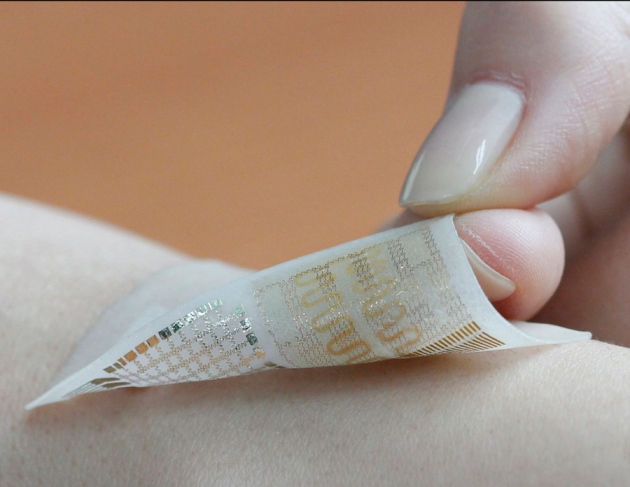
Donghee Son and Jongha Lee - Wearable sensors have until now been unable to store data locally.
Researchers have created a wearable device that is as thin as a
temporary tattoo and can store and transmit data about a person’s
movements, receive diagnostic information and release drugs into skin.
Similar efforts to develop ‘electronic skin’ abound, but the device
is the first that can store information and also deliver medicine —
combining patient treatment and monitoring. Its creators, who report
their findings today in Nature Nanotechnology1, say that the technology could one day aid patients with movement disorders such as Parkinson’s disease or epilepsy.
The
researchers constructed the device by layering a package of stretchable
nanomaterials — sensors that detect temperature and motion, resistive
RAM for data storage, microheaters and drugs — onto a material that
mimics the softness and flexibility of the skin. The result was a sticky
patch containing a device roughly 4 centimetres long, 2 cm wide and 0.3
millimetres thick, says study co-author Nanshu Lu, a mechanical
engineer at the University of Texas in Austin.
“The novelty is really in the integration of the memory device,” says
Stéphanie Lacour, an engineer at the Swiss Federal Institute of
Technology in Lausanne, who was not involved in the work. No other
device can store data locally, she adds.
The trade-off for that memory milestone is that the device works only if
it is connected to a power supply and data transmitter, both of which
need to be made similarly compact and flexible before the prototype can
be used routinely in patients. Although some commercially available
components, such as lithium batteries and radio-frequency identification
tags, can do this work, they are too rigid for the soft-as-skin brand
of electronic device, Lu says.
Even if softer components were available, data transmitted wirelessly
would need to be converted into a readable digital format, and the
signal might need to be amplified. “It’s a pretty complicated system to
integrate onto a piece of tattoo material,” she says. “It’s still pretty
far away.”

